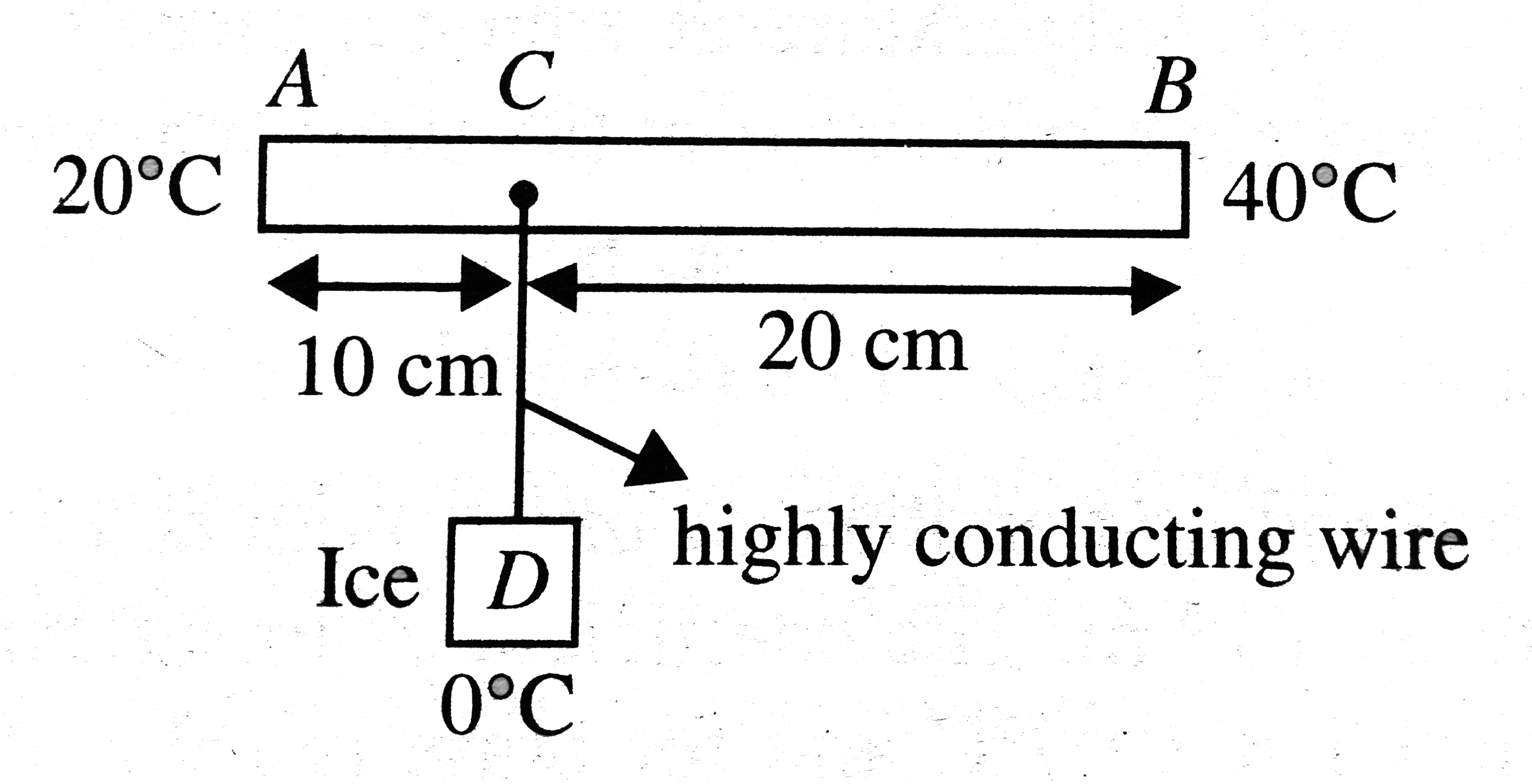A refrigerator door is 150 cm high, 80 cm wide, and 6 cm thick. If the coefficient of conductivity is 0.0005 cal/cms∘C and the inner and outer surfaces are at 0∘C and 30∘C, respectively, what is the heat loss per minute through the door, in caloris?
Apply the equation of thermal conductivity
Q=kA(th−tc)(time)d=0.005(150×80)(30∘−0∘)(60)4
=1800 cal
Topper's Solved these Questions
- BOOK - CENGAGE PHYSICSCHAPTER - CALORIMETRYEXERCISE - Exercise 1.123videos
CALORIMETRY
- BOOK - CENGAGE PHYSICSCHAPTER - CALORIMETRYEXERCISE - Exercise 1.222videos
CALORIMETRY
- BOOK - CENGAGE PHYSICSCHAPTER - BASIC MATHEMATICSEXERCISE - Exercise 2.620videos
BASIC MATHEMATICS
- BOOK - CENGAGE PHYSICSCHAPTER - CENTRE OF MASSEXERCISE - INTEGER_TYPE1videos
CENTRE OF MASS
Similar Questions
A metallic cylindrical shell of length 50 cm has inner radius of 3 cm and outer radius of 6 cm. If the inner and outer surfaces of the cylinder are maintained at 0∘C and 80∘C , respectively, then find the rate of flow of heat from the outer surface to the inner surface. Take, thermal conductivity of metal =69.3Wm−1k−1
View SolutionThe only possibility of heat flow in a thermos flask is through its cork which is 75cm2 in area and 5 cm thick. Its thermal conductivity is 0.0075cal/cmsec∘C. How lolng will 500 g of ice at 0∘C in thermos flask will is 40∘C and latent heat of ise is 80cal./gram.
View Solution
Knowledge Check
- Question 1 - Select One

The only possibility of heat flow in a thermos flask is through its cork which is 75cm2 in area and 5 cm thick its thermal conductivity is 0.0075cal/cm−s−∘C. The outside temperature is 40∘C and latent heat of ice is 80cal/g. Time taken by 500 g of ice at 0∘C in the flask to melt into water at 0∘C isA2.47 hB4.27 hC7.42 hD4.72 h - Question 2 - Select One
If the coefficient of conductivity of aluminium is 0.5calcm−1s−1.∘C−1, then the other to conductor 10cals−1cm−2 in the steady state, the temperature gradient in aluminium must be
A5∘C/cmB10∘C/cmC20∘C/cmD10.5∘C/cm - Question 3 - Select One

As shown in Fig. AB is rod of length 30 cm and area of cross section 1.0cm2 and thermal conductivity 336 SI units. The ends A and B are maintained at temperatures 20∘C and 40∘C, respectively .A point C of this rod is connected to a box D, containing ice at 0∘C through a highly conducting wire of negligible heat capacity. The rate at which ice melts in the box is (assume latent heat of fusion for ice Lf=80cal/g)A84mg/sB84g/sC20mg/sD40mg/s
Three rods of copper, brass and steel are welded together to form a Y -shaped structure. The cross-sectional area of each rod is 4cm2. The end of copper rod is maintained at 100∘C and the ends of the brass and steel rods at 80∘C and 60∘C respectively. Assume that there is no loss of heat from the surfaces of the rods. The lengths of rods are : copper 46 cm, brass 13 cm and steel 12 cm.
(a) What is the temperature of the junction point?
(b) What is the heat current in the copper rod?
K(copper) = 0.92, K (steel) = 0.12 and K(brass) = 0.26 cal/cm−s∘C .View SolutionThe plane surface of two sheets of different metals are kept in contact with each other. The thickness of sheets 2.5cm and 3 cm respectively and the ratio of their thermal conductivities in the same order is 5:6. If the outer surfaces of the sheets are at constant temperatures of 100∘C and 10∘C respectively, calculate the temperature of interface.
View SolutionA hemispherical bowl is made of steel, 0.25 cm thick. The inner radius of the bowl is 5 cm. Find the outer curved surface area of the bowl.
View SolutionA wall consists of two layer, one of thickness 3 cm and other of 6 cm. the thermal conductivities of the materials of these layers are K and 3K respectively. The temperature of the outer surfaces of the two layers are −5∘C and 20∘C respectively. determine the temperature of the surface of contact of the two layers in the steady state.
View SolutionA sheet of styrofoam of thickness 2 cm and area 0.1m2 has a temperature difference of 30∘C between its inner and outer surfaces. Considering thermal conductivity as 0.01 J/s m K, the rate of heat flow through the sheet is
View Solution

